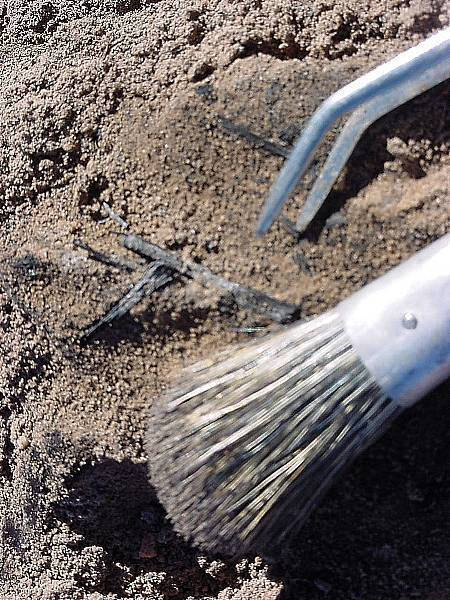
 |
| As the excavations reached the floor level, archeologists spotted small hollow tubes of burned grass and took lots of samples. They looked like the yellow Indian grass (Sorghastrum nutans) that grows on the site today, and this identification was later confirmed. |